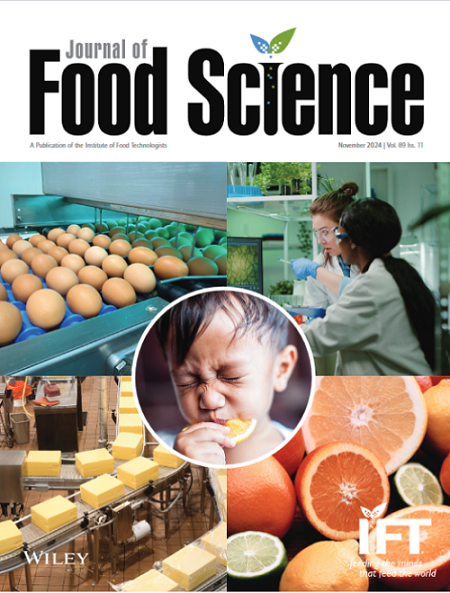Characterization and mechanism of formation of fibrous and worm-like β-lactoglobulin self-assemblies
Abstract
In this study, a series of characterizations and analyses of fibrous β-lactoglobulin self-assembly (FBS) and worm-like β-lactoglobulin self-assembly (WBS) were carried out to investigate the key factors for the formation of self-assemblies of β-lactoglobulin under two different induced conditions. Compared with natural β-lactoglobulin, FBS was always positively charged, increasing to 9.69 mV when heated for 10 h, whereas WBS was always negatively charged, decreasing to −20.73 mV when heated for 20 min. Electrostatic interactions play a crucial role in the formation of both FBS and WBS. The free sulfhydryl content decreased by 10.4% at 20 min of heating compared with that at 1 min of heating. β-Lactoglobulin converted the exposed free sulfhydryl groups to disulfide bonds when heated under neutral conditions, and disulfide bonds played a key role in the formation of WBS. The surface hydrophobicity of FBS reached its maximum at 1 h of heating, while that of WBS reached its maximum at 15 min of heating. The hydrophobic interactions played an extremely important role in the formation of the two self-assemblies. The investigation of the formation mechanism of FBS and WBS is of great significance for the preparation of β-lactoglobulin self-assembled gels.
Practical Application
Probing the formation mechanism of β-lactoglobulin self-assemblies provides new methods and ideas for the preparation of β-lactoglobulin gels, which is important for improving the structure and properties of gel carriers prepared from bio-based materials.

 求助内容:
求助内容: 应助结果提醒方式:
应助结果提醒方式:


